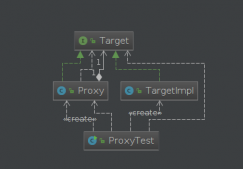前言
大家都知道,equals和hashcode是java.lang.object类的两个重要的方法,在实际应用中常常需要重写这两个方法,但至于为什么重写这两个方法很多人都搞不明白。
在上一篇博文java中equals和==的区别中介绍了object类的equals方法,并且也介绍了我们可在重写equals方法,本章我们来说一下为什么重写equals方法的时候也要重写hashcode方法。
先让我们来看看object类源码
|
1
2
3
4
5
6
7
8
9
10
11
12
13
14
15
16
17
18
19
20
21
22
23
24
25
26
27
28
29
30
31
32
33
34
35
36
|
/** * returns a hash code value for the object. this method is * supported for the benefit of hash tables such as those provided by * {@link java.util.hashmap}. * <p> * the general contract of {@code hashcode} is: * <ul> * <li>whenever it is invoked on the same object more than once during * an execution of a java application, the {@code hashcode} method * must consistently return the same integer, provided no information * used in {@code equals} comparisons on the object is modified. * this integer need not remain consistent from one execution of an * application to another execution of the same application. * <li>if two objects are equal according to the {@code equals(object)} * method, then calling the {@code hashcode} method on each of * the two objects must produce the same integer result. * <li>it is <em>not</em> required that if two objects are unequal * according to the {@link java.lang.object#equals(java.lang.object)} * method, then calling the {@code hashcode} method on each of the * two objects must produce distinct integer results. however, the * programmer should be aware that producing distinct integer results * for unequal objects may improve the performance of hash tables. * </ul> * <p> * as much as is reasonably practical, the hashcode method defined by * class {@code object} does return distinct integers for distinct * objects. (this is typically implemented by converting the internal * address of the object into an integer, but this implementation * technique is not required by the * java™ programming language.) * * @return a hash code value for this object. * @see java.lang.object#equals(java.lang.object) * @see java.lang.system#identityhashcode */ public native int hashcode(); |
|
1
2
3
4
5
6
7
8
9
10
11
12
13
14
15
16
17
18
19
20
21
22
23
24
25
26
27
28
29
30
31
32
33
34
35
36
37
38
39
40
41
42
43
44
45
46
47
48
49
|
/** * indicates whether some other object is "equal to" this one. * <p> * the {@code equals} method implements an equivalence relation * on non-null object references: * <ul> * <li>it is <i>reflexive</i>: for any non-null reference value * {@code x}, {@code x.equals(x)} should return * {@code true}. * <li>it is <i>symmetric</i>: for any non-null reference values * {@code x} and {@code y}, {@code x.equals(y)} * should return {@code true} if and only if * {@code y.equals(x)} returns {@code true}. * <li>it is <i>transitive</i>: for any non-null reference values * {@code x}, {@code y}, and {@code z}, if * {@code x.equals(y)} returns {@code true} and * {@code y.equals(z)} returns {@code true}, then * {@code x.equals(z)} should return {@code true}. * <li>it is <i>consistent</i>: for any non-null reference values * {@code x} and {@code y}, multiple invocations of * {@code x.equals(y)} consistently return {@code true} * or consistently return {@code false}, provided no * information used in {@code equals} comparisons on the * objects is modified. * <li>for any non-null reference value {@code x}, * {@code x.equals(null)} should return {@code false}. * </ul> * <p> * the {@code equals} method for class {@code object} implements * the most discriminating possible equivalence relation on objects; * that is, for any non-null reference values {@code x} and * {@code y}, this method returns {@code true} if and only * if {@code x} and {@code y} refer to the same object * ({@code x == y} has the value {@code true}). * <p> * note that it is generally necessary to override the {@code hashcode} * method whenever this method is overridden, so as to maintain the * general contract for the {@code hashcode} method, which states * that equal objects must have equal hash codes. * * @param obj the reference object with which to compare. * @return {@code true} if this object is the same as the obj * argument; {@code false} otherwise. * @see #hashcode() * @see java.util.hashmap */ public boolean equals(object obj) { return (this == obj); } |
hashcode:是一个native方法,返回的是对象的内存地址,
equals:对于基本数据类型,==比较的是两个变量的值。对于引用对象,==比较的是两个对象的地址。
接下来我们看下hashcode的注释
1.在 java 应用程序执行期间,在对同一对象多次调用 hashcode 方法时,必须一致地返回相同的整数,前提是将对象进行 equals 比较时所用的信息没有被修改。
从某一应用程序的一次执行到同一应用程序的另一次执行,该整数无需保持一致。
2.如果根据 equals(object) 方法,两个对象是相等的,那么对这两个对象中的每个对象调用 hashcode 方法都必须生成相同的整数结果。
3.如果根据 equals(java.lang.object) 方法,两个对象不相等,那么两个对象不一定必须产生不同的整数结果。
但是,程序员应该意识到,为不相等的对象生成不同整数结果可以提高哈希表的性能。
从hashcode的注释中我们看到,hashcode方法在定义时做出了一些常规协定,即
1,当obj1.equals(obj2) 为 true 时,obj1.hashcode() == obj2.hashcode()
2,当obj1.equals(obj2) 为 false 时,obj1.hashcode() != obj2.hashcode()
hashcode是用于散列数据的快速存取,如利用hashset/hashmap/hashtable类来存储数据时,都是根据存储对象的hashcode值来进行判断是否相同的。如果我们将对象的equals方法重写而不重写hashcode,当我们再次new一个新的对象的时候,equals方法返回的是true,但是hashcode方法返回的就不一样了,如果需要将这些对象存储到结合中(比如:set,map ...)的时候就违背了原有集合的原则,下面让我们通过一段代码看下。
|
1
2
3
4
5
6
7
8
9
10
11
12
13
14
15
16
17
18
19
20
21
22
23
|
/** * @see person * @param args */ public static void main(string[] args) { hashmap<person, integer> map = new hashmap<person, integer>(); person p = new person("jack",22,"男"); person p1 = new person("jack",22,"男"); system.out.println("p的hashcode:"+p.hashcode()); system.out.println("p1的hashcode:"+p1.hashcode()); system.out.println(p.equals(p1)); system.out.println(p == p1); map.put(p,888); map.put(p1,888); map.foreach((key,val)->{ system.out.println(key); system.out.println(val); }); } |
equals和hashcode方法的都不重写
|
1
2
3
4
5
6
7
8
9
10
11
12
13
14
|
public class person{ private string name; private int age; private string sex; person(string name,int age,string sex){ this.name = name; this.age = age; this.sex = sex; }} |
|
1
2
3
4
5
6
|
p的hashcode:356573597p1的hashcode:1735600054falsefalsecom.blueskyli.练习.person@677327b6com.blueskyli.练习.person@1540e19d |
只重写equals方法
|
1
2
3
4
5
6
7
8
9
10
11
12
13
14
15
16
17
18
19
20
21
22
23
|
public class person{ private string name; private int age; private string sex; person(string name,int age,string sex){ this.name = name; this.age = age; this.sex = sex; } @override public boolean equals(object obj) { if(obj instanceof person){ person person = (person)obj; return name.equals(person.name); } return super.equals(obj); }} |
|
1
2
3
4
5
6
|
p的hashcode:356573597p1的hashcode:1735600054truefalsecom.blueskyli.练习.person@677327b6com.blueskyli.练习.person@1540e19d |
equals和hashcode方法都重写
|
1
2
3
4
5
6
7
8
9
10
11
12
13
14
15
16
17
18
19
20
21
22
23
24
25
26
27
28
|
public class person{ private string name; private int age; private string sex; person(string name,int age,string sex){ this.name = name; this.age = age; this.sex = sex; } @override public boolean equals(object obj) { if(obj instanceof person){ person person = (person)obj; return name.equals(person.name); } return super.equals(obj); } @override public int hashcode() { return name.hashcode(); }} |
|
1
2
3
4
5
|
p的hashcode:3254239p1的hashcode:3254239truefalsecom.blueskyli.练习.person@31a7df |
我们知道map是不允许存在相同的key的,由上面的代码可以知道,如果不重写equals和hashcode方法的话会使得你在使用map的时候出现与预期不一样的结果,具体equals和hashcode如何重写,里面的逻辑如何实现需要根据现实当中的业务来规定。
总结:
1,两个对象,用==比较比较的是地址,需采用equals方法(可根据需求重写)比较。
2,重写equals()方法就重写hashcode()方法。
3,一般相等的对象都规定有相同的hashcode。
4,string类重写了equals和hashcode方法,比较的是值。
5,重写hashcode方法为了将数据存入hashset/hashmap/hashtable(可以参考源码有助于理解)类时进行比较
好了,以上就是这篇文章的全部内容了,希望本文的内容对大家的学习或者工作具有一定的参考学习价值,如果有疑问大家可以留言交流,谢谢大家对服务器之家的支持。
原文链接:https://www.cnblogs.com/blueskyli/p/9936076.html














